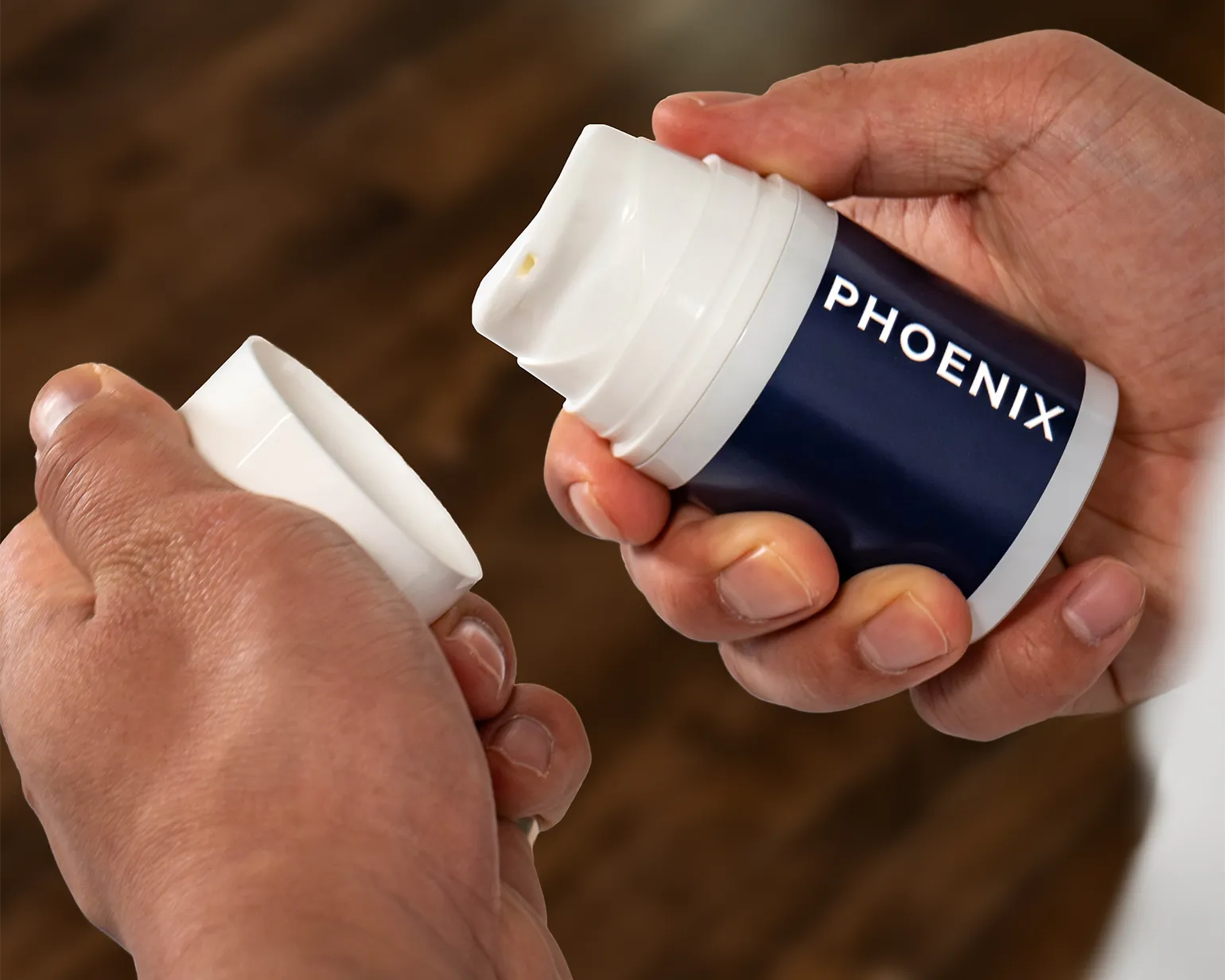Common Signs of STDs in Men
- Jump to a Section:
Are you worried about contracting or having contracted an STD? If so, you are not alone. Hundreds of thousands of people in Canada are infected with an STD each year. Many STDs have no symptoms, but others have symptoms that may be easy to miss or mistake for something else. STDs can cause a variety of problems, including pain and discomfort, infertility, and even cancer. If you are sexually active, it is important that you learn the signs and symptoms of STDs.
What is an STD?
STDs are infections that are passed from person to person through intimate contact, including vaginal, anal, or oral sexual contact. STDs can spread to your mouth, throat, eyes, or other parts of your body during oral, vaginal, or anal sex. Some infections, including HIV, can also be spread in other ways, such as from mother to child during pregnancy or breastfeeding. Some STDs can be spread by skin-to-skin contact with an infected area. Some STDs can be cured, but others can lead to serious long-term health problems.
What is an STI?
STIs and STDs are often used interchangeably, but they are not the same. STIs are sexually transmitted infections, which means that they are caused by bacteria, viruses, or parasites. However, an infection does not always result in symptoms. The term STD is generally used when someone has a disease that can be passed from person to person through sexual contact. STIs are often just used to refer to infections that are bacterial or viral.
Common STDs, STIs, and Their Symptoms in Men
1. Herpes
Herpes is a viral STD that is transferred through skin-to-skin contact. It is extremely common.
There are two types of Herpes: herpes simplex virus type 1 (HSV-1) and herpes simplex virus type 2 (HSV-2). HSV-1 normally infects the mouth area while HSV-2 normally infects the genital area. HSV-2 can infect the mouth area and HSV-1 can infect the genital area, and it is more common than you may think.
The most common symptom of herpes is a blister or sore on the infected area. When the blisters break, it leaves painful sores that can take weeks to heal. Other symptoms include redness, itchiness, and tingling. The first outbreak of herpes is often the worst and can be very painful. The sores will be filled with a clear or yellowish liquid with a strong odor. The sores will eventually scab over and heal, but the virus remains dormant in the body and can come back at any time.
Herpes is not treatable, but medication can relieve the symptoms. If a person has herpes, they can not infect other people, but it is possible to have herpes and not have any symptoms.
2. Syphilis
Syphilis is a bacterial STD that is transferred through sexual contact. It is very easy to get syphilis, and it is important to see a doctor as soon as possible if you suspect you have syphilis.
Syphilis has 3 stages: primary, secondary, and tertiary. The symptoms of the primary stage are painless sores on the genitals, anus, or mouth. They are usually not noticeable and go away on their own in a month or so. The secondary stage of syphilis is when the sores go away and the symptoms start to show. These symptoms can include swollen lymph nodes, headaches, fever, hair loss, weight loss, muscle aches, and a sore throat. The tertiary stage is when the disease starts to damage the internal organs. It can cause heart disease, brain disease, blindness, and dementia.
Syphilis is treated with antibiotics, but it is very important to see a doctor as soon as possible.
3. Genital Warts
Genital warts are caused by the Human Papilloma Virus (HPV). There are more than 100 types of HPV, but there are a few that are considered high-risk because they are responsible for causing most cases of genital warts and cervical cancer. There is no cure for genital warts.
Genital warts can appear anywhere on the genital area. They are usually small and flat, but can grow to the size of a dime. They can be flesh-colored, pink, or brown. Genital warts can cause pain, itching, and bleeding.
Genital warts can be treated, but there is no cure. They can be removed with a chemical, freezing, or laser surgery.
4. Chlamydia
Chlamydia is a bacterial STD that is transferred through sexual contact. There are two types of Chlamydia: Chlamydia trachomatis and Chlamydia pneumoniae.
Chlamydia is the most common STI in the United States. It is easy to get Chlamydia and can be passed through vaginal, anal, or oral sex. Chlamydia is often asymptomatic and can be hard to diagnose. There are no visible signs or symptoms of chlamydia.
If left untreated, Chlamydia can cause serious health problems in men, women, and babies. It can also cause infertility in women. A person can get chlamydia several times because the bacteria stays in the body for life. Chlamydia can be treated with antibiotics.
5. Gonorrhea
Gonorrhea is a bacterial STD that is transferred through sexual contact. There are two types of Gonorrhea: Neisseria Gonorrhoeae and Chlamydia trachomatis.
Gonorrhea is very common in the United States. The first symptom of gonorrhea is a burning sensation during urination. A few days later, the person will have a yellow/green discharge from their penis/vagina. In the next few days, the person will have pain in their lower abdominal area that can spread to the testicles or anus. A person can also have pus filled sores in the genital area.
Gonorrhea is treated with antibiotics, but it is very important to see a doctor as soon as possible.
6. Hepatitis A
Hepatitis A is a viral STD that is transferred through sexual contact. There are two types of Hepatitis A: Hepatitis A and Hepatitis B.
The symptoms of Hepatitis A are jaundice (yellowing of the skin and eyes), fever, fatigue, nausea, loss of appetite, pain in the abdomen, dark-colored urine, and light-colored stool. Hepatitis A is diagnosed through blood tests. It is possible to have Hepatitis A and not have any symptoms.
Hepatitis A is treated with rest, fluids, and a diet that is high in protein.
7. Hepatitis B & Hepatitis C
Hepatitis B is a viral STD that is transferred through sexual contact. Hepatitis B and Hepatitis C are similar and there is a blood test for Hepatitis B and a blood test for Hepatitis C. There is no cure for Hepatitis B or Hepatitis C, and they can get worse with time.
Hepatitis B and Hepatitis C can cause liver disease, liver cancer, and death. The symptoms of Hepatitis B and Hepatitis C are fatigue, jaundice, confusion, nausea, vomiting, extreme abdominal pain, pale gums, and dark urine.
Hepatitis B is treated with rest and fluids, but there is no cure.
8. Trichomoniasis
Trichomoniasis is a viral STD that is transferred through sexual contact. It is very common in the United States.
The first symptom of trichomoniasis is itching in the genital area. It usually goes away after about a week. However, there is then a foul-smelling yellowish discharge from the vagina or penis. The discharge can be foamy and sticky, and it can cause pain during urination. The discharge can cause irritation in the eyes, mouth, and vagina. The symptoms typically go away in several weeks, but they can cause serious problems such as vaginal and bladder infections.
Trichomoniasis may be hard to pronounce, but it isn't hard to treat. Antibiotics can clear up the infection.
How To Prevent STDs and STIs
There are many ways to prevent getting an STD or STI. It is important to be aware of the symptoms of STDs and STIs. If you have symptoms, go to your doctor immediately.
There are many ways to reduce your risk of contracting an infection including using condoms and regular check-ups with your doctor. It is important to protect yourself by using condoms and practicing safe sex. Make sure to use a new condom every time you have sex and make sure to use a new condom if having sex with more than one person.
Many people are unaware that they have an STD or STI. Even if you are in a relationship, get tested regularly.
Safe Sex Tips:
1. Use a condom, which acts as a barrier for most STDs and STIs.
2. Limit your sexual partners.
3. Get tested regularly.
4. Having sex with only one person who only has sex with you is the best way to prevent STDs and STIs.
5. Have sex only with someone who has been tested recently.



